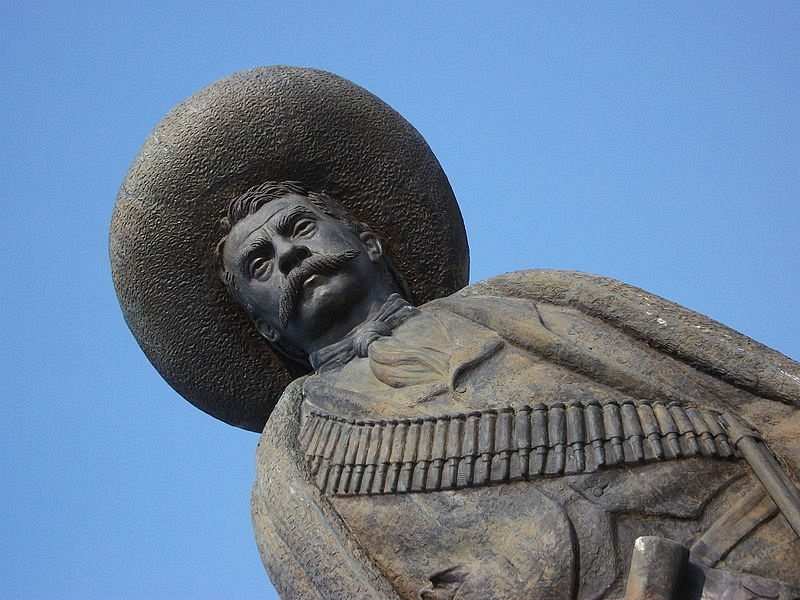One of Mexico's national heroes: Who is Emiliano Zapata?
Emiliano Zapata is one of the prominent leaders of the 1910 Mexican Revolution against the dictatorship of Porfirio Díaz. Zapata is considered one of Mexico's national heroes, and the Zapatistas, the revolutionary movement that rebelled and declared autonomy in Chiapas, took their name from him.

Legendary Mexican revolutionary hero, guerrilla, and anarchist Emiliano Zapata was ambushed and murdered on April 9, 1919.
Emiliano Zapata Salazar, the national leader of the Mexican Peasant Revolution, was born in 1879 as the ninth child of the Zapata-Salazar couple.
Zapata, who was killed on April 10, 1919, was the leader of the first major peasant movement of the 20th century.
Emiliano Zapata, who advocated equal distribution of land among the peasants, defended the rights of the people as the leader of the guerrilla war during and after the Mexican Peasant Revolution, which did not reach a definitive victory.
Emiliano Zapata Salazar (August 8, 1879 – April 10, 1919) was a Mexican revolutionary. He was a leading figure in the Mexican Revolution of 1910–1920, the main leader of the people's revolution in the Mexican state of Morelos, and the inspiration of the agrarian movement called Zapatismo.
The Zapata-Salazar family was among the few families who tried to protect their lands by not bowing to the pressure they faced in Mexico, which was ruled by a dictatorship by Porfirio Diaz.
Emiliano Zapata, who took on the task of taking care of his family after his father's death, became a respected person in the village he lived in overtime and was elected Chairman of the Village Defense Committee in 1909.
A year after Zapata became the chairman of the committee, he occupied the lands of the Hacienda owners and distributed them to the villagers, without shedding blood.
Chiapas, located in the southeast of the country and the poorest region of the country, where the Mayans who resisted many oppressions and injustices for centuries lived, is also called the 'region of rebellions'.
The people who resisted the Spanish and Christianization in the sixteenth century; started the bloody rebellion in the name of Christianity, which was suppressed after the acceptance of the religion.
In the twentieth century, peasants revolted to protect their lands and rights against the dictatorial regime. The leader of this war was Zapata, who is still considered a folk hero today.
Considered the 'Eternal Commander' by the Indian Zapatistas, Zapata fought against President Porfirio Diaz with the Southern Liberation Army, which he founded and led, during the Mexican Revolution.
The Zapatista Army of National Liberation (EZLN), founded by the Mayans in 1983, took his name as well as adopted Zapata's ideals of freedom.
After becoming the chairman of the committee, Zapata started a peaceful struggle to protect the rights of the people and to share the land equally among the peasants, but when his efforts did not yield any results, he turned to armed struggle.
During the same period, the Diaz administration was in danger with the candidacy of Francisco Madero.
Believing that the order would change, Zapata saw this situation as an opportunity and formed a secret alliance with Madero. The duo, with the support of the villagers, ensured the overthrow of the Diaz administration in May 1911.
Although new land reforms were made during the Madero administration, these were not sufficient for Zapata. For this reason, the Zapata-Madero alliance broke down in the same year.
After the alliance ended, Zapata settled in the mountains around Puebla and continued his struggle for rights against Madero.
Zapata, who formed an alliance with former Madero supporters Pascual Orozco and Emiliano V. Gomez, met his need for weapons thanks to Gomez.
Zapata, who did not comply with Madero's call for disarmament because the rights of peasants and farmers were not given, published a land reform document called 'Plan de Ayala'.
Zapata, who gained more support after the murder of Madero by Victoriano Huerta in 1913, did not accept Huerta's authority.
Counter-revolutionary Huerta, who did not accept Zapata's reform plan, was defeated by Venustiano Carranza Garza, one of the leaders of the Mexican Revolution.
Zapata, who refused to attend the congress because the committee members appointed by Carranza to determine the new administration were not elected, forwarded the reform plan to the congress for review.
Carranza worked to divide the Zapatistas after Huerta and had Zapata killed with the trap he set on April 10, 1919.
Viva Zapata!
The 1952 film was adapted from John Steinbeck's biography book titled Invincible Zapata.
Marlon Brando, Jean Peters, and Anthony Quinn shared important roles in the film directed by Elia Kazan.
